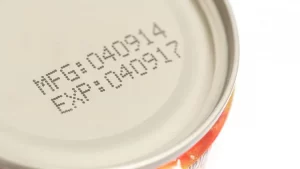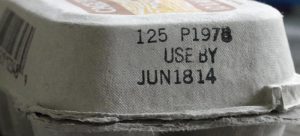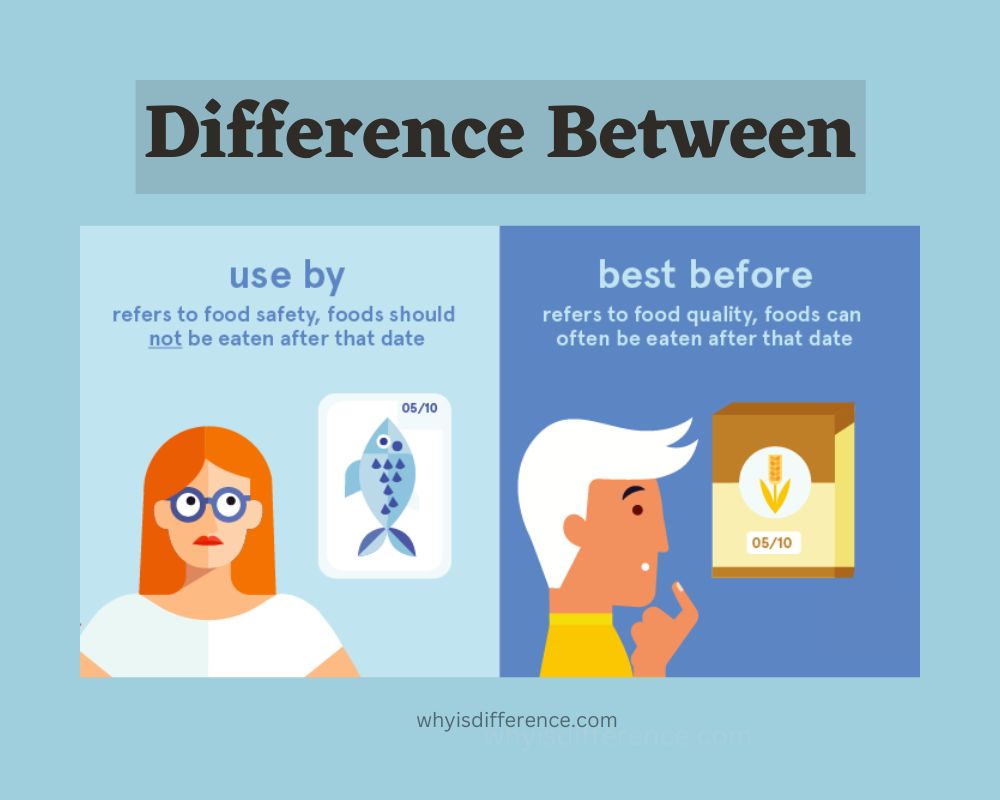Best Before and Use by Dates: The dates Best Before and Use By are used to determine the shelf life of specific products. Shelf life refers to the amount of time that is allowed for a perishable product, such as food or drink. In some regions, the ‘Best Before” or ‘Use By’ date is required to be printed on these packages. It is a recommended time period for the product’s quality and safety.
Definition of Best Before Date

Food labels typically indicate how long products should remain fresh if stored under appropriate conditions. This label provides consumers with information regarding quality, taste and texture retention over time. Manufacturers provide best-before dates as an indicator to help customers maintain customer satisfaction and preserve product attributes. After its “best before” date has passed, quality may decline but that does not indicate food is unsafe for consumption. Best before dates are commonly seen on non-perishable, shelf-stable products like canned goods, packaged dry foods, and snack food. A best-before date indicates when it would provide optimal sensory experiences; it does not indicate any safety issues if that date has passed.
Definition of use by date

Food labels display use-by dates to indicate when an item must be consumed to maintain safety. Manufacturers use scientific testing to ascertain a date when their product no longer poses any threat to health due to bacteria growth or other factors which might compromise it. The use-by date is more critical than its best-before counterpart because it relates directly to food safety rather than product quality. You’ll usually find this date on perishable items like meat, poultry and dairy products. Foods with short shelf lives and increased susceptibility to bacteria contamination increase the risk of foodborne illness when consumed after their use-by date has expired. To ensure consumer safety, it’s a good idea to dispose of products after their expiry dates have passed.
Importance of understanding the difference between the two
Understanding the difference between best before and use by dates is vital for consumers in making an informed decision about the quality and safety of the food they eat.
Here are a few reasons why consumers must be familiar with this distinction:
- Food Safety: Use by dates indicates when consuming certain products may present a threat to health due to bacteria growth or other hazards, and by understanding this date consumers can avoid eating expired or potentially contaminated food, thus decreasing their chances of foodborne illness.
- Product Quality: Best before dates provide consumers with information regarding when an item will reach its optimal quality and taste, enabling them to make decisions based on its freshness, sensory attributes, and taste – giving them peace of mind as they enjoy each delicious bite along their culinary journey.
- Plan Your Purchases: By understanding the difference between best-before and use-by dates, consumers can plan their purchases more effectively. When determining quantities, consumers should keep in mind shelf-life and expiration dates to ensure perishable items are consumed before their use-by dates while non-perishables should be managed based on their best-before dates.
- Consumer Well-Being: Understanding the implications and meaning of these dates will allow you to put your health and well-being first. Consuming food within its recommended date range will reduce the chance of eating spoiled or harmful products.
- Legal Compliance: Depending on where consumers live, food “best before” and “use by” dates may be subject to industry standards that govern them. By understanding these dates, consumers can stay compliant with industry requirements while making more informed decisions when buying and eating their food products.
Understanding the difference between best-before and use-by dates enables consumers to make more informed decisions regarding food safety, quality and waste reduction. It helps them plan purchases more effectively while improving overall health – encouraging responsible consumption for a more sustainable food system.
Best Before Date
Food products typically bear labels that indicate how long their quality, taste, and texture should remain at their optimal levels if stored under proper conditions. This term may differ depending on the product in question. Manufacturers provide best-before dates as a guideline to maintain customer satisfaction and uphold desired product attributes. Quality may gradually decline after its expiration date, though this does not equate to being unsafe food. Best Before Dates (BPDs) can often be found on non-perishable shelf-stable products like canned goods, packaged dry foods, and snack food. A best-before date serves only as a recommendation; any pasting dates do not indicate safety issues with that product.
Use By Date
Use-by dates are used on food products as a warning. Manufacturers rely on scientific testing to ascertain when they no longer meet safety requirements due to bacteria growth, allergens or any other factor which might put consumers’ health at risk. The use-by date is more significant than the best-before date as it relates directly to food safety, not simply product quality. Perishable items like meat, poultry, and dairy products typically display this date on the packaging. These foods typically have a limited shelf life and can become easily contaminated by bacteria, increasing the risk of foodborne illness when consumed past their use-by date. To ensure consumer safety, it’s generally considered prudent to discard products after their expiry dates have passed.
Key Differences Between Best Before and Use By Dates
Best-before dates are used to measure the freshness and quality of products, providing a period during which they should retain their optimal flavor, texture, and quality. Use-by dates are more relevant to food safety concerns as they indicate when consumers should consume products to prevent potential health risks.
- Safety vs. Quality: While best-before dates provide an indicator of quality, consuming it after that date may not necessarily compromise safety; even if its quality has degraded it could still be safe to consume it. In comparison, use-by dates serve as guidelines for safety as increased consumption could increase foodborne illness due to bacteria growth or other risks.
- Shelf Life: “Best before” dates typically refer to non-perishable, shelf-stable foods with long shelf lives such as canned goods, packaged dry foods, and snack foods that do not show signs of spoilage after their “best before” dates have passed. Use-by dates are more frequently found on foods with shorter shelf lives such as fresh meats or dairy products that may be susceptible to bacterial contamination after their date of use; such products should not be consumed after this date of use has passed.
- Product Attributes: Best before and use-by dates are determined based on various attributes associated with a product, including its packaging, composition, and quality expectations over time. Dates can also depend upon factors like the perishability of the item being assessed as well as susceptibility to bacteria growth or safety considerations.
Consumers need to distinguish between dates when it comes to making informed decisions about food safety and quality, with best-before dates proving safe to eat; use-by dates are however more essential for food safety.
Factors Influencing the Determination of Best Before and Use By Dates
Food manufacturers and regulatory agencies rely on various factors when setting best before and use-by dates for food products, taking these considerations into account to create guidelines on product safety and quality.
Here are the main ones:
- Product Type and Composition: Different food products have different susceptibilities to spoilage and differing shelf lives, depending on their food type and composition. Fresh meat, dairy products, and other perishable items should be consumed by earlier dates for best results, while canned goods or packaged dry foods may have longer Best Before dates. Furthermore, shelf life can also depend on the ingredients or formulation of a product.
- Packaging and Storage Conditions: Packaging and storage conditions can influence the exposure of a product to oxygen, light, moisture, and other external factors that could compromise its safety and quality. Shelf life estimates, best before/use-by dates may also depend upon such things as integrity of packaging, oxygen absorbers or preservatives used as well as modified atmosphere packaging techniques – with recommended storage conditions such as ambient temperature or refrigeration in mind.
- Microbial Growth and Staleness Factors: Bacteria, yeasts, molds, and mold spores can spoil food and present serious health hazards, so use-by dates are determined based on each product’s microbial growth capacity. Water activity, pH level, and natural antimicrobial compounds all play an important part in how quickly microbes multiply – so microbiologists and food safety experts analyze these factors in order to establish appropriate use-by dates.
- Regulations and Industry Standards: Both government regulations and industry standards play a key role in setting guidelines for product dating. Labeling requirements may be specified by regulatory bodies to provide consistency and ensure consumer safety; associations or organizations within an industry may provide manufacturers with recommendations regarding date labeling practices.
Food products vary based on regional regulations and manufacturer testing and analysis to establish best before/use-by dates for their food products, which ensures safety and quality for their consumers.
Understanding Labels and Date Codes
Consumers must understand labels and date codes when purchasing food products in order to make informed decisions regarding quality, safety, and freshness.
When deciphering date codes or labels there are several key points they must keep in mind when doing so:
These dates should be prominently displayed. The use-by date indicates when products must be consumed to ensure safety, so identifying both of these dates is crucial for reducing the risks of eating unsafe food.
- Date Formats: The format of dates can differ depending on your region or country. Common examples include day/month/year (e.g. DD/MM/YYYY) or month/day/year (MM/DD/YYYY). To accurately interpret a date, pay close attention to how numbers appear within its structure.
- Storage Instructions: Labels can provide specific storage instructions such as, “refrigerate once opened” or “store in a dry, cool place.” Following these guidelines can ensure the highest product quality and safety, prolonging shelf-life while keeping consumption safe.
- Packaging codes: Manufacturers often utilize symbols or codes on packaging to keep track of their products, rather than as indicators for freshness or safety. Inventory management often employs this practice.
- Signs of Spoilage: While date codes provide guidance when it comes to food safety and freshness evaluation, using your senses when making decisions should always come first when it comes to evaluating any product’s safety and freshness. Some indicators of spoilage include unusual smells, color changes, texture shifts or mold growth – it’s best to discard such products immediately regardless of their expiration dates.
- Considerations for Individual Products: Different products require specific labels or date codes; eggs for instance may have Julian codes to show when they were produced, whereas canned goods might contain batch/lot numbers to facilitate traceability. Being informed about how various labels and codes affect products can assist consumers with making more informed choices.
Remember that labels and date codes should only serve as guides, not absolute indicators of quality or safety. Use your senses, store food properly, and handle it carefully if you are uncertain. Consult local food safety guidelines or reach out directly to the manufacturer if there are questions.
Food Waste Reduction and Consumer Actions
Reduced food waste requires the combined efforts of producers, retailers, and consumers. Consumer choices and actions play a vital role in decreasing wasteful food consumption;
here are key consumer actions which help curb food waste:
- Smart Shopping: Create shopping lists and only purchase what is on them, while keeping an eye on portion sizes and avoiding impulse buys. Shopping strategically will reduce food waste.
- Storage Guidelines: To extend the shelf-life of perishables, follow proper storage guidelines. It’s crucial that food be stored at an ideal temperature (freezing or refrigeration) in airtight containers.
- Understanding Date Labels: Understand the difference between use-by and best-before dates to ensure safety, but be mindful that many products can still be consumed post-best-before date as long as no signs of spoilage exist.
- Sensory Evaluation: Rely on all five senses when judging the freshness and quality of food products, regardless of their expiration dates. Use smell, taste, and appearance as guides when assessing whether something may still be safe to eat.
- Leftovers Management: Find ways to reuse leftovers by creating new meals from them or freezing them for later consumption. Get creative when using up what remains and create delectable dishes using only leftovers!
- Portion control: For best results, utilize appropriate portion sizes when it comes to serving dishes of food on plates. Instead of offering excessive servings that leave food behind on plates, opt for smaller servings with second helpings when ordering instead of excessive portions that lead to excess leftovers on your plates.
- Food Preservation Techniques: Gain knowledge about various food preservation techniques such as canning, pickling and freezing surplus produce or prepared meals in order to extend their shelf life and reduce food waste. These practices may extend shelf life as well as decrease waste.
- Donate and Share: Rather than disposing of leftover food by throwing it away, consider donating or sharing it with local food banks in your area or sharing with neighbors, friends or local community organizations in need. It’s essential that nutritious food reaches those most in need.
Implementing these practices will enable consumers to minimize food waste, save resources, and lessen environmental impacts associated with the production and disposal of food products. Remember that individual actions can add up quickly in terms of curbing global food waste!
Conclusion
Understanding the difference between best-before dates and use-by dates is vitally important for consumers who wish to make educated choices regarding food freshness and safety. A best-before date indicates when products can expect to maintain maximum quality; on the other hand, use-by dates indicate when consumption must occur in order to minimize potential health risks.
Understanding these dates will enable consumers to reduce food waste through smart shopping, proper storage and making use of leftovers, and aware portion control. Additional ways of cutting back waste could include donating excess food items or exploring alternative preservation techniques or composting them. These actions help decrease food waste, encourage sustainable consumption patterns, conserve resources and mitigate the environmental impact associated with food production and disposal. Together we can work towards more responsible food consumption through individual and collective actions, benefitting both ourselves and the planet.

